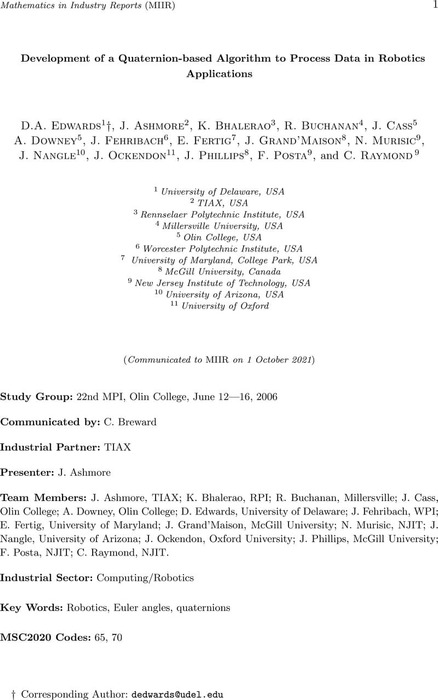Abstract
To implement automated control of a robot arm, it is critical to have an accurate description of the arm's position, orientation, and velocity in 3-space. Such a description can be facilitated with data about how the arm is aligned with the gravitational and magnetic fields of the Earth (the Earth frame). Using various sensors, TIAX can provide data on the orientation of the Earth's gravitational field with respect to the body frame of the robot arm, as well as the angular velocities of each axis making up the body frame. In this work, we focus on the transformation of this data from the body frame into the Earth frame. We examine the transformations in four different contexts: Euler angles, quaternions, rotations about a single axis, and transition matrices. We find that the contexts that do not rely upon angle definitions are superior. Unfortunately, consumers often demand the contexts that do.
Content






